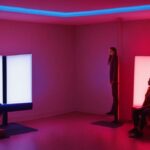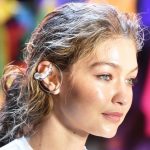Last Updated on 12 months by Francis
Light therapy is a popular treatment used to alleviate a host of medical conditions like depression, sleep disorders, and skin conditions. While this therapy is generally considered safe, there have been concerns raised about its long-term effects on the eyes. In this discussion, I will explore the question of whether light therapy can cause eye problems and provide insights into the current scientific research supporting both sides of the debate.
Contents
What is Light Therapy?
Light therapy is a popular non-invasive treatment that involves exposure to specific wavelengths of light to treat various conditions, including seasonal affective disorder (SAD), depression, insomnia, and skin disorders. Light therapy devices come in different forms, such as lightboxes, lamps, and wearables, and emit different types of light, such as blue, red, and white light. However, some people wonder if light therapy can cause eye problems, such as cataracts, macular degeneration, and retinal damage.
How Does Light Therapy Work?
Light therapy works by stimulating the body’s natural response to light to improve mood, energy, and sleep-wake cycles. Light therapy affects the brain’s production of melatonin, a hormone that regulates sleep, and serotonin, a neurotransmitter that affects mood. Light therapy also affects the body’s circadian rhythm, the internal clock that regulates sleep-wake cycles and other bodily functions. By exposing the body to bright light, light therapy can help reset the circadian rhythm and improve sleep quality and duration.
What Are the Types of Light Therapy?
There are several types of light therapy, including:
- Bright light therapy: Involves exposure to bright light from a lightbox or lamp.
- Dawn simulation therapy: Involves a gradual increase in light intensity to simulate a sunrise.
- Blue light therapy: Involves exposure to blue light to regulate the circadian rhythm and improve mood.
- Red light therapy: Involves exposure to red light to promote wound healing, reduce inflammation, and improve skin health.
Although light therapy is generally safe and well-tolerated, some people may experience side effects, such as headache, eyestrain, and irritability. However, there is no evidence to suggest that light therapy can cause eye problems, such as cataracts, macular degeneration, or retinal damage.
What Are Cataracts?
Cataracts are a common eye condition that affects more than half of Americans over the age of 80. Cataracts occur when the lens of the eye becomes cloudy, causing blurry vision, glare, and reduced color perception. Cataracts can develop due to aging, genetics, or exposure to UV radiation or other environmental factors. However, there is no evidence to suggest that light therapy can cause cataracts.
What Is Macular Degeneration?
Macular degeneration is a progressive eye disease that affects the macula, the part of the retina responsible for central vision. Macular degeneration can cause blurred or distorted vision, blind spots, and difficulty reading or recognizing faces. Macular degeneration can develop due to aging, genetics, or exposure to UV radiation or other environmental factors. However, there is no evidence to suggest that light therapy can cause macular degeneration.
What Is Retinal Damage?
Retinal damage is a serious eye condition that can lead to vision loss or blindness. Retinal damage can occur due to various factors, such as UV radiation, blue light, or physical trauma. However, there is no evidence to suggest that light therapy can cause retinal damage.
How to Use Light Therapy Safely
While light therapy is generally safe and well-tolerated, it is essential to use it correctly to avoid side effects or complications. Here are some tips for using light therapy safely:
- Choose a reputable light therapy device that emits the appropriate type and intensity of light.
- Follow the manufacturer’s instructions for use, including the duration and timing of each session.
- Start with a low-intensity light and gradually increase the intensity over time to avoid eye strain or headaches.
- Use eye protection, such as goggles, if you have a history of eye problems or sensitivity to light.
- Avoid using light therapy if you have a history of bipolar disorder or are taking photosensitive medications.
- Consult a healthcare professional if you have any concerns about using light therapy or if you experience any side effects or complications.
FAQs: Can Light Therapy Cause Eye Problems?
What is light therapy?
Light therapy is a therapeutic intervention that uses artificial light to treat various medical conditions, including depression, seasonal affective disorder (SAD), sleep disorders, skin disorders, and certain types of cancer.
Light therapy delivers bright, artificial light that mimics natural outdoor light to stimulate the retina and trigger brain chemicals that regulate mood and improve sleep. The therapy is typically administered through a lightbox or other specialized light device.
Can light therapy cause eye problems?
Although light therapy is generally considered a safe and effective treatment, exposure to bright light can cause eye problems, especially if the eyes are not adequately protected. Some of the potential eye problems associated with light therapy include dry eyes, blurry vision, and retinal damage.
How can I prevent eye problems when undergoing light therapy?
To minimize the risk of eye problems, it is important to follow the manufacturer’s instructions for using the light device carefully. It is also recommended that you wear protective eyewear, such as sunglasses or goggles, during the treatment. Additionally, make sure that the light source is positioned correctly to avoid direct exposure to your eyes.
What are the symptoms of eye problems caused by light therapy?
The symptoms of eye problems caused by light therapy may include redness, dryness, burning, itching, blurry vision, or sensitivity to light. If you experience any of these symptoms, it is important to contact your healthcare provider immediately to receive appropriate treatment.
Can light therapy be harmful to my eyes in the long-term?
While light therapy is generally considered safe, prolonged exposure to bright light can lead to retinal damage and other long-term eye problems. If you are concerned about the potential long-term effects of light therapy on your eyes, please consult with your healthcare provider.







